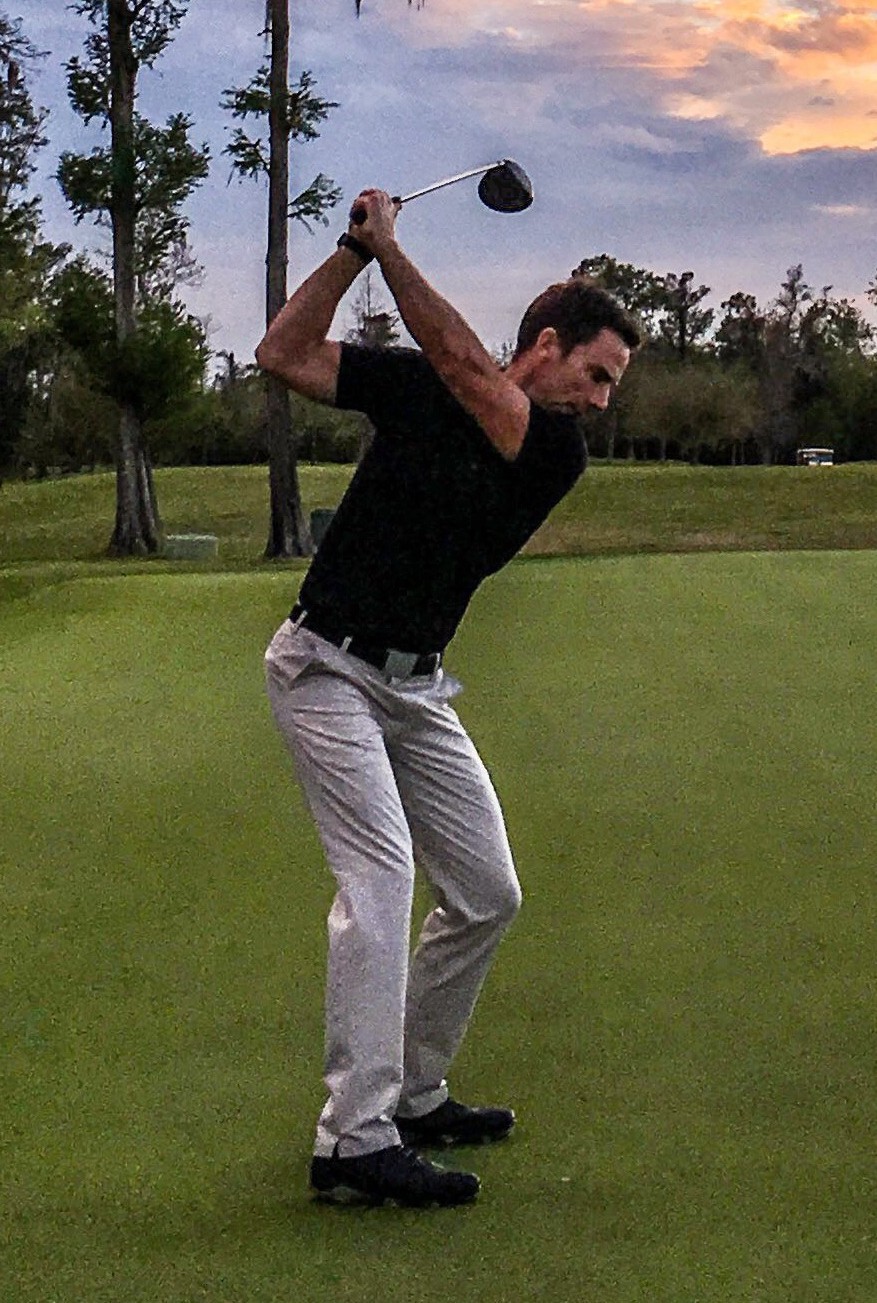By Thomas T Wartelle, WGTF Master Golf Teaching Professional
One issue I often see in golfers is the loss of spine angle at impact. This problem is often experienced by high handicappers and tour players alike. The flaw can effect several factors of impact dynamics. One such factor could be the the quality of strike (centeredness of contact) resulting in inconsistent contact. We hear people say that they “picked up their head,” but in reality they changed their spine angle from address to the impact position.
When loss of spine angle at impact occurs with better players, often there is a compensation to save the shot. This could be saving the impact with excess hand action or another compensation such as curving the spine. The good player can get away with this fault for some shots, but the fault will eventually lead to stray shots. The most common result in better players is a swing path that is excessively inside to out. This leads to shots that are often well right or left of the target, pending how the clubface matches up with the path at impact.
You will hear better players and instructors calling this fault as being “stuck” on the backswing. I have seen this fault occur in some famous tour professionals. The result is a shot (by a right-handed player) that goes well right. If the hand action is excessive, there is a hard hook shot left. Remember from some of my past instructional articles my saying: “The clubface sends it; the swing path bends it”?
Which leads to the bigger challenge, how do we fix this flaw? A good place to start is actually the golfer’s physical capabilities. When a golfer has a tight lower back or hamstring, or hip issues, this leads to compensations, frequently resulting in loss of the spine angle at impact. It can also just be a poor habit or a sensation of getting more power by thrusting the torso towards the ball. The better sensation is a feeling of squatting into the lead leg on the downswing. The torso should have a slight shift toward the target and then rotate with a feeling that the lead hip and glute are pulling or rotating away from the ball. This is very similar to a squat movement into the lead glute. As the impact position is approached, the spine angle is maintained with a feeling of the lead hip rotating and pushing back into a “wall.” The lead leg will somewhat straighten naturally at impact as the lead hip begins to rise higher than the trailing hip. In this position, the golfer is maximizing the “ground forces” and creating maximum torque and energy (think Rory McIlroy or Justin Thomas).
Losing the spine angle at impact can be a challenging fault to overcome. As this occurs during the dynamic swinging action, drills to cure this fault can be difficult to describe in words. It is best to demonstrate or feel the proper sensation of proper spine angle at impact. For more drills and information, please visit the USGTF Facebook page or my YouTube Channel, where I demonstrate several exercises to help fix this problem.
Copyright © 2023 United States Golf Teachers Federation, All Rights Reserved
200 S. Indian River Drive, Suite #206, Fort Pierce, FL 34950
772-88-USGTF or 772-595-6490 - www.usgtf.com
200 S. Indian River Drive, Suite #206, Fort Pierce, FL 34950
772-88-USGTF or 772-595-6490 - www.usgtf.com

